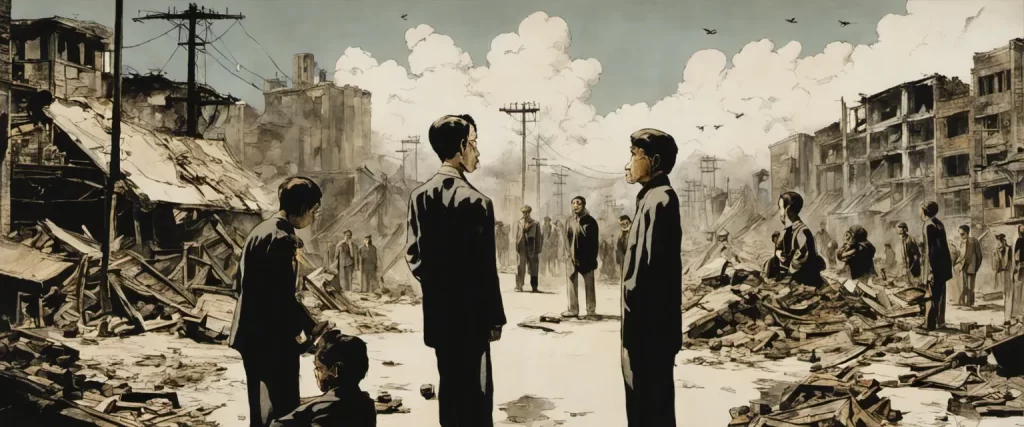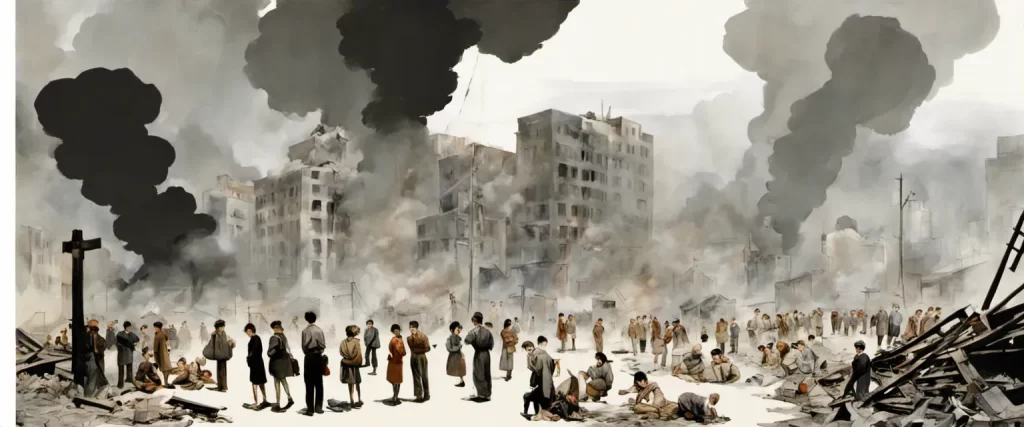
What is Historic Spotlight
Historic Spotlight refers to a special recognition or emphasis given to a specific event, person, or historical period that holds significant importance in history. It involves highlighting and promoting the understanding of the chosen subject, often through various forms of media, exhibits, educational programs, or commemorative events. By placing a historic spotlight on certain topics, societies aim to foster knowledge, appreciation, and preservation of their cultural, social, or political heritage.
What Can We Get From Historic Spotlight?
From Historic Spotlight, we can gain a deeper understanding and appreciation of historical events, figures, and cultural phenomena. The spotlight sheds light on important moments in history and allows us to examine them from different perspectives. It provides insights into the impact and significance of these historical events on society, politics, and culture. We can learn about the struggles, achievements, and contributions of historical figures and movements. Historic Spotlight also helps us recognize patterns, causes, and consequences of historical events, enabling us to make informed decisions and avoid repeating past mistakes. Overall, it allows us to connect with our past and helps shape our present and future.
Strategies in Learning Historic Spotlight
1. Create a study schedule: Setting aside specific blocks of time for studying historic spotlight can help you stay focused and motivated. Consistency is key when it comes to learning historic spotlights, so make sure to allocate enough time each week to review and research.
2. Break it down: Historic spotlight can be overwhelming, especially if you are dealing with a vast amount of information. Break down the subjects into smaller, more manageable chunks, and focus on one topic at a time. This will help you to better absorb and understand the material.
3. Take comprehensive notes: As you study, take detailed notes on the key points, names, dates, and significant events related to the historic spotlight. This will not only help you remember the information better but will serve as a valuable reference for future revision.
4. Utilize visual aids: Maps, charts, and timelines can be helpful tools in understanding historic spotlights. Visual aids can assist in visualizing the context and connections between different events and can aid in retaining information through visual memory.
5. Engage in active learning: Try not to simply passively read or listen to information about historic spotlights. Actively engage with the material by asking questions, participating in discussions or debates, and seeking out additional resources.
6. Make connections: Historic spotlights are often interconnected, with one event leading to another. Try to establish relationships and connections between different historic spotlights. This will help you understand the broader historical context and enhance your overall understanding.
7. Use mnemonic devices: Mnemonic devices, such as acronyms, rhymes, or associations, can be useful in remembering specific details or sequences in historic spotlights. For example, creating a phrase or sentence using the first letter of key points can help you recall them easily.
8. Seek diverse resources: Historical spotlights can have multiple interpretations and perspectives. Use a variety of resources such as textbooks, articles, documentaries, podcasts, and online platforms to gain a well-rounded understanding of the topic.
9. Practice recall and review regularly: To ensure long-term retention of the historic spotlight material, regularly review and test your knowledge. Quiz yourself or participate in study groups to reinforce what you have learned and identify any gaps in your understanding.
10. Reflect and apply: Take time to reflect on the significance of the historic spotlights and their relevance to the world today. Consider how historical events have shaped society and analyze their impact on contemporary issues. Applying your knowledge to real-world situations can deepen your understanding and make the learning process more meaningful.

The Rape of Nanking by Iris Shun-Ru Chang
Summary
The Rape of Nanking, written by Iris Shun-Ru Chang, provides a harrowing account of the brutal events that took place during the 1937-1938 Japanese occupation of the Chinese city of Nanking (now known as Nanjing). The book seeks to shed light on one of the most horrific atrocities of the 20th century, during which an estimated 300,000 Chinese civilians and disarmed soldiers were ruthlessly murdered, and countless others were subjected to widespread rape, torture, and pillaging.
Chang begins by providing historical context, discussing the decades leading up to the invasion, the Sino-Japanese War, and the fall of Shanghai. Japanese troops, having encountered fierce Chinese resistance, subjected the city to a campaign of terror in an attempt to break the spirit of the Chinese people and establish dominance. The book highlights the stories of both Chinese survivors and Japanese soldiers involved in the massacre, offering a multi-dimensional perspective on the events.
Throughout the book, Chang details the systematic nature of the atrocities, presenting evidence from witness testimonies, diaries, and official Japanese documents. She describes how Japanese soldiers engaged in mass killings, looting, and arson, turning Nanking into a hellish landscape of destruction and despair. Additionally, the scale and brutality of sexual violence perpetrated against Chinese women and girls is explored, with Chang highlighting the profound psychological and physical trauma endured by the victims.
Chang also delves into the response of the international community, revealing the efforts of a small group of Westerners and Chinese individuals who established a safety zone within Nanking, working tirelessly to protect as many people as possible. Despite the horrendous circumstances, Chang provides moments of hope and resilience, detailing acts of heroism, compassion, and perseverance amidst the chaos.
The Rape of Nanking serves as both a historical record and a testament to the enduring importance of remembering and acknowledging such atrocities. By uncovering the truth behind this dark chapter in history, Chang aims to counter denial and revisionist accounts, while calling for justice and reconciliation. The book stands as a powerful reminder of the consequences of mass violence, the importance of preserving human dignity, and the necessity of preventing such brutalities from recurring.
Reasons for Recommendation
1. Historical significance: “The Rape of Nanking” sheds light on a horrific event that is often overlooked or downplayed in historical narratives. It brings attention to the brutal atrocities committed by Imperial Japanese forces during the Nanking Massacre in 1937, providing a unique account of this dark chapter in World War II history.
2. In-depth research: Iris Chang meticulously researched and documented the events surrounding the Nanking Massacre, drawing from multiple sources such as survivor testimonies, diary entries, official documents, and war crime trials. The book provides a comprehensive and well-documented account of the atrocities, offering readers a deeper understanding of the historical context and the experiences of those who lived through it.
3. Humanitarian perspective: The book highlights the human suffering caused by the Nanking Massacre, focusing on the personal stories of survivors and the trauma they endured. Chang’s compassionate approach helps humanize the victims and amplifies their voices, ensuring that their stories are not forgotten.
4. Educational resource: “The Rape of Nanking” serves as an important educational resource for students, scholars, and anyone interested in understanding the full impact of war and its consequences. By reading this book, readers gain insight into the consequences of unchecked aggression and the importance of remembering and learning from history.
5. Awareness and prevention: By bringing attention to the Nanking Massacre, the book raises awareness about the atrocities committed during wartime and their long-lasting effects. It serves as a reminder of the importance of preventing such atrocities in the future by fostering a sense of empathy, understanding, and respect for human rights.
6. Impact on historiography: Chang’s work has had a profound influence on how the Nanking Massacre is understood and remembered. “The Rape of Nanking” ignited academic and public interest in the subject, leading to further research and discussion. The book’s impact extends beyond its initial publication, shaping the study of World War II history and influencing subsequent works on the topic.
7. Empowerment of marginalized voices: The book gives voice to the survivors of the Nanking Massacre, many of whom were silenced or marginalized for decades. By sharing their stories, “The Rape of Nanking” provides a platform for these individuals to be heard, validated, and remembered, contributing to the recognition of their experiences as an integral part of history.
8. Ethical considerations: The book raises important questions about accountability, justice, and the responsibility of individuals and nations in the face of gross human rights violations. It encourages readers to reflect on the ethical implications of war crimes and to consider ways to prevent similar atrocities in the future.
Overall, “The Rape of Nanking” is a compelling read for anyone interested in understanding the historical, humanitarian, and ethical dimensions of the Nanking Massacre and its broader implications. The book’s impact on historiography, its educational value, and its ability to bring attention to marginalized voices make it particularly noteworthy from a historical perspective.

Hiroshima by John Hersey
Summary
Hiroshima” by John Hersey is a non-fiction book that tells the stories of six survivors of the atomic bombing of Hiroshima, Japan, on August 6, 1945. The author conducted interviews with these survivors in the years following the bombings and compiled their experiences into a single chronological narrative.
The book begins with the introduction of the six main characters, who come from different backgrounds and occupations such as doctors, nurses, clergy, and a young female clerk. These characters are then followed throughout the day leading up to the bombing, during the attack, and in the aftermath.
The narrative is presented in a straightforward manner, detailing the horrific effects of the bombing on the individuals, their families, and the city as a whole. Each survivor’s experience is vividly portrayed, often illustrating their initial confusion, the intense heat and radiation burns, the destruction of their surroundings, and the desperate struggle for survival amidst chaos and devastation.
Furthermore, the book delves into the physical and emotional aftermath of the bombing, including the immediate effects on survivors’ health and their long-term struggles with radiation sickness and discrimination. It reveals the city’s slow and painful recovery process, government neglect, and the survivors’ efforts to rebuild their lives.
Throughout the book, Hersey emphasizes the catastrophic humanitarian consequences of nuclear warfare, shedding light on the indiscriminate devastation caused by the bomb and its long-lasting impact on the lives of ordinary people.
Hiroshima” by John Hersey is a testament to the resilience of the human spirit and serves as a powerful reminder of the consequences of nuclear warfare, urging readers to consider the moral, ethical, and humanitarian implications of such destructive weapons.
Reasons for Recommendation
1. In-depth historical account: “Hiroshima” provides a meticulous and comprehensive chronicle of the devastating atomic bomb attack on the Japanese city of Hiroshima. John Hersey vividly captures the events leading up to the bombing, the immediate aftermath, and the long-term impacts on the survivors. It offers readers a deep understanding of this significant moment in history.
2. Personal stories of survivors: The book focuses on six individuals who were in Hiroshima at the time of the bombing. By sharing their personal experiences, Hersey brings the human side to history, allowing readers to empathize with the survivors and comprehend the true horrors of the bombing. These firsthand accounts make the historical event relatable on an emotional level.
3. Documentary-style portrayal: Hersey’s writing in “Hiroshima” is reminiscent of journalistic reporting, providing an objective and factual perspective. The book avoids sensationalism and instead presents a balanced portrayal of the event. This approach enhances the book’s credibility and allows readers to engage critically with the presented information.
4. Long-lasting impact: “Hiroshima” had an immense impact on public opinion and policy-making after its publication in 1946. The book played a crucial role in raising awareness about the dangers of nuclear weapons and advocating for peace. By recommending “Hiroshima,” readers can gain insights into the history of the anti-nuclear movement and the lessons learned from one of the darkest chapters in human history.
5. Historical significance: The bombing of Hiroshima was a pivotal moment, fundamentally changing the course of World War II and shaping global politics for decades to come. Hiroshima” provides historical context to understand the decision-making process behind the use of atomic weapons and its impact on warfare. It also sheds light on the subsequent debates surrounding nuclear disarmament and arms control.
6. Illustration of the human cost of war: The book’s focus on personal stories showcases the immense suffering and loss endured by the residents of Hiroshima. Through these accounts, “Hiroshima” emphasizes the importance of peace, highlighting the devastating consequences of war and the urgency to avoid future conflicts. The book serves as a reminder of the need for empathy and understanding in global affairs.
7. Historical analysis and reflection: “Hiroshima” prompts readers to reflect on the moral and ethical questions raised by the bombing. It delves into the ethical implications of using such destructive weapons and the responsibility of nations in times of warfare. By reading the book, readers can engage in critical thinking and develop a broader understanding of the complexities of history.
Overall, recommending “Hiroshima” from a historic spotlight perspective allows readers to delve into the historical account, gain insights from personal stories, comprehend the consequences of war, and understand the long-lasting impact of this tragic event on the world.
Embracing Defeat by John W. Dower
Summary
Embracing Defeat” by John W. Dower is a comprehensive analysis of the occupation and reconstruction of Japan after its defeat in World War II. The book examines the social, political, cultural, and economic conditions of the country during the seven years of American occupation from 1945 to 1952.
Dower delves into various aspects of the post-war Japanese society, including the pervasive influence of the Allied forces, the drastic shifts in political power, and the substantial cultural transformation. He explores how Japan’s defeat and subsequent occupation offered opportunities for the Japanese people to confront their past actions, dismantle militarism, and embrace a new path.
The book discusses the American occupation’s strategies for rebuilding the country, including the reforms implemented by General Douglas MacArthur. It examines the impact of these reforms on the Japanese bureaucracy, economy, education system, and media. Additionally, Dower delves into the ways in which the occupation exposed the contradictions and complexities of Japanese society, such as the struggles over war responsibility and the emergence of new political ideologies.
Dower also explores the cultural shifts that occurred during this tumultuous era, with particular attention to the role of literature, music, and film in shaping the national identity and confronting their wartime and imperialist past. The book also sheds light on the ways in which Japanese citizens navigated their daily lives amidst economic hardships, scarcity, and the rebuilding of cities devastated by war.
Overall, “Embracing Defeat” provides a detailed and nuanced analysis of Japan’s transition from a militaristic, imperial power to a postwar democratic society. Dower skillfully captures the complexities and contradictions of this period, highlighting the struggles, accomplishments, and challenges faced by the Japanese people during one of their most transformative eras in modern history.
Reasons for Recommendation
1. Comprehensive and well-researched: Embracing Defeat is a highly regarded historical book that offers a comprehensive analysis of post-World War II Japan. The author, John W. Dower, meticulously researched various primary and secondary sources, ensuring that readers get an accurate and detailed understanding of Japan’s historical context.
2. Unique perspective on post-war Japan: While there are numerous books on World War II, few delve into the aftermath and reconstruction of Japan like Embracing Defeat. This book sheds light on a relatively less explored period in history, providing a fresh and unique perspective on post-war Japan, its people, and their struggles.
3. Insight into Japanese society and culture: Dower not only focuses on political and economic aspects but also explores the social and cultural changes that Japan underwent during this period. Readers will gain a deeper understanding of how Japanese society coped with defeat, occupation, and the challenges of rebuilding their nation.
4. Engaging narrative style: Despite being a scholarly work, Embracing Defeat is written in an engaging and accessible style that makes it enjoyable for both history enthusiasts and general readers. Dower successfully combines historical analysis with engaging storytelling, ensuring readers remain captivated throughout the book.
5. Explores the complexity of reconstruction: This book does not simplify the process of post-war reconstruction but rather delves into the nuances, complexities, and contradictions that Japan faced during this time. Dower examines the interaction between the occupying forces and the Japanese people, shedding light on power dynamics, socio-political changes, and the challenges of democratization.
6. Broadens perspective beyond the Western narrative: Embracing Defeat challenges the widely-held Western perspective of a victorious America remaking Japan in its own image. Instead, Dower emphasizes the agency and resilience of the Japanese people, exploring their diverse responses, adaptability, and negotiation with the occupation forces.
7. Thought-provoking analysis: Through his analysis, Dower brings forth thought-provoking insights into the effects of war, defeat, and occupation on a defeated country. He provides a deeper understanding of the long-lasting impacts on Japanese society and how it shaped the nation for years to come.
8. Winner of prestigious awards: Embracing Defeat has received several prestigious awards, including the Pulitzer Prize for General Non-Fiction in 2000. The book’s accolades attest to its exceptional quality, extensive research, and significant contributions to the field of history.
In conclusion, Embracing Defeat is a highly recommended book for those interested in gaining a comprehensive understanding of post-World War II Japan. Dower’s meticulous research, unique perspective, engaging writing style, and thought-provoking analysis make it a valuable read for anyone looking to explore this crucial period in Japan’s history.
Pingback: Jerusalem: Unlocking the Secrets of Local Culture
Pingback: Benjamin Franklin: American Historic Figures
Pingback: Healing Through Words: Books That Can Foster Psychological Resilience - Paidread